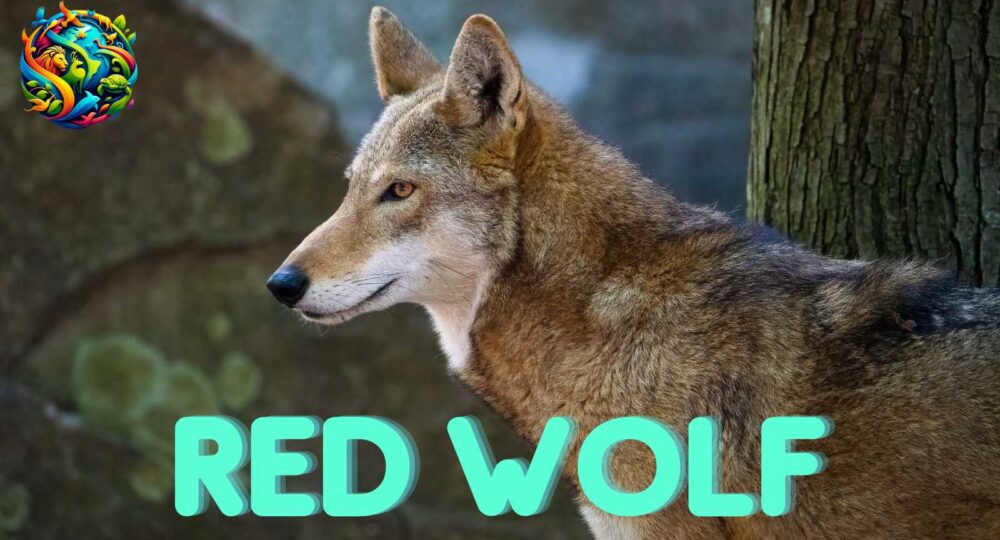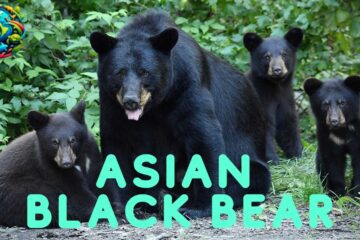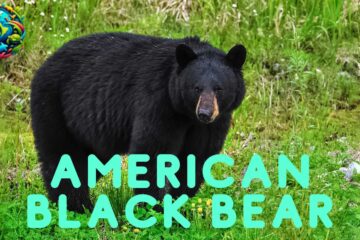
Red Wolf: America’s Rare and Resilient Predator
Red Wolf: America’s Rare and Resilient Predator
Introduction
Brief overview of the subspecies: The red wolf (Canis rufus) is one of the world’s most endangered canids, native to the southeastern United States. Characterized by its reddish-brown fur and slender build, the red wolf is a symbol of the American wilderness. Despite its critical role in the ecosystem, this species teeters on the brink of extinction, with only a small population surviving in the wild.
Importance or uniqueness of the subspecies: Red wolves are unique for their intermediate size and appearance, falling between the larger gray wolves and smaller coyotes. They play a crucial role as apex predators, helping to control populations of smaller animals and maintain ecological balance. Their genetic history is complex, with evidence suggesting hybridization with coyotes, adding to their uniqueness and the challenges in conserving them.
General information about their population and distribution: Once widespread throughout the southeastern United States, red wolves now inhabit only a fraction of their historical range. The remaining wild population is primarily confined to the Alligator River National Wildlife Refuge in North Carolina, with fewer than 20 individuals estimated to be in the wild as of recent counts. Captive breeding programs are crucial to their survival.
Amazing Fact about red wolf
One or two fascinating facts specific to the subspecies:
- Comeback from Extinction: Red wolves were declared extinct in the wild in 1980 but were reintroduced through a captive breeding program in 1987, marking a significant conservation milestone.
- Versatile Hunters: Red wolves are versatile predators that can adapt their hunting techniques to pursue a variety of prey, from deer to small mammals.
Something unique that sets them apart from other subspecies or species: Red wolves are distinguished by their distinctive reddish fur and their adaptability. Unlike many canids, they have a high tolerance for diverse habitats, ranging from swamps and forests to coastal prairies.
Habitat/Food
Detailed description of their natural habitat: Red wolves prefer habitats such as swamps, coastal prairies, and forests. These environments provide ample cover and food sources, crucial for their survival and breeding. The dense vegetation and wetlands of North Carolina’s Alligator River provide the perfect habitat for these elusive predators.
Specific regions or climates they thrive in: They thrive in the southeastern United States, particularly in regions with abundant wetlands and mixed forests. These areas offer the necessary cover and prey diversity to support their populations.
Primary diet and any unique feeding behaviors: Red wolves primarily hunt White-tailed deer, Raccoons, Rabbits, and small rodents. They are opportunistic feeders and may also consume insects and berries when available. Their hunting strategy often involves stalking and ambushing prey, utilizing their keen senses of smell and hearing to locate food.
Appearance
Physical characteristics specific to the subspecies: Red wolves have a distinctive reddish-brown coat, often mixed with black and gray. They possess long legs, a slender build, and a more pointed muzzle compared to gray wolves. Adults typically weigh between 45 to 80 pounds, making them smaller than gray wolves but larger than coyotes.
Any variations in size, color, or features compared to other subspecies: There is some variation in fur color among red wolves, with individuals exhibiting different shades of red, brown, and gray. They are generally more slender and less robust than gray wolves, with facial features that can sometimes resemble those of coyotes.
Adaptations that help them survive in their environment: Their reddish coat provides camouflage in their forested and swampy habitats. Red wolves have keen senses of smell and hearing, essential for hunting and avoiding threats. Their long legs and agile build allow them to move quickly through dense vegetation and across varied terrains.
Types/Subspecies of red wolf
List and brief description of any known subspecies or varieties if applicable: While the red wolf itself is considered a distinct species, its population includes individuals with slight genetic variations due to historical hybridization with coyotes. This genetic mixing has led to ongoing debates about the classification and conservation strategies for the species.
Predator & Threats of red wolf
Natural predators: Red wolves have few natural predators. Larger carnivores like Alligators and Bobcats can pose a threat to younger wolves, but adults are generally at the top of their food chain in their current habitats.
Human-induced threats and conservation status: The most significant threats to red wolves come from human activities. Habitat loss due to development, vehicle strikes, and illegal hunting are major concerns. Additionally, hybridization with coyotes poses a genetic threat, potentially diluting the red wolf gene pool. Due to these challenges, red wolves are classified as critically endangered.
Efforts being made to protect them: Conservation efforts include captive breeding programs, habitat protection, and public education to reduce human-wildlife conflicts. The Red Wolf Recovery Program, managed by the U.S. Fish and Wildlife Service, focuses on monitoring populations, managing genetic diversity, and working with local communities to support red wolf conservation.
Mating
Mating behaviors and rituals specific to the subspecies: Red wolves typically mate for life, forming strong bonds with their partners. They engage in courtship behaviors such as grooming, nuzzling, and playful chasing to reinforce their bond and ensure successful breeding.
Breeding season and reproductive cycle: The breeding season for red wolves occurs between January and March. After a gestation period of approximately 60-63 days, the female gives birth to a litter of 4-6 pups. The timing of the birth aligns with the spring season, ensuring that food is plentiful for the growing pups.
Care for the young and parental involvement: Both parents are actively involved in raising the pups. The mother stays close to the den to nurse and protect the newborns, while the father hunts and brings back food. As the pups grow, they are introduced to solid food and taught essential survival skills by all members of the pack.
How red wolf Communicate
Types of communication used (vocalizations, body language, etc.): Red wolves communicate using a variety of vocalizations, including howls, barks, growls, and whines. These sounds help them maintain pack cohesion, establish territory, and coordinate during hunts.
Specific examples of how they communicate within the species:
- Howling: Used to gather the pack and mark territory, often performed in chorus to strengthen social bonds.
- Growling and Snarling: Displayed during aggressive encounters or to establish dominance within the pack.
- Whining and Whimpering: Express submission or request attention, particularly from pups to adults.
Body language is equally important, with tail positions, ear movements, and facial expressions conveying a range of messages from dominance and aggression to submission and playfulness.
Movies on red wolf
- “Red Wolf Revival” (Documentary): This documentary follows the efforts to save the red wolf in North Carolina, highlighting the challenges and successes of conservation initiatives.
- “Red Wolves: An Endangered Species Story” (TV Episode): A nature documentary episode that provides an in-depth look at the history, biology, and conservation of red wolves.
FAQs
Common questions about the subspecies:
- What do red wolf eat?
- Red wolves primarily hunt white-tailed deer, raccoons, rabbits, and small rodents. They are opportunistic feeders and may also consume insects and berries.
- Where do red wolf live?
- Red wolves inhabit swamps, coastal prairies, and forests in the southeastern United States, with the largest wild population currently found in North Carolina’s Alligator River National Wildlife Refuge.
- How do red wolves communicate?
- They communicate through vocalizations like howls, barks, growls, and whines, as well as through body language involving tail positions, ear movements, and facial expressions.
- How are red wolves adapted to their environment?
- Red wolves have keen senses of smell and hearing, a reddish coat that provides camouflage, and a slender, agile build suited for navigating dense vegetation and varied terrains.
- Are red wolves endangered?
- Yes, red wolves are critically endangered, with fewer than 20 individuals estimated to be in the wild. They face threats from habitat loss, hybridization with coyotes, and human-related activities.
This comprehensive article explores the fascinating world of the red wolf, one of America’s most endangered predators. From their unique genetic makeup to their crucial role in maintaining ecological balance, red wolves are a testament to the resilience and adaptability of wildlife. As conservation efforts continue, understanding and appreciating these remarkable animals is essential for their survival and the health of the ecosystems they inhabit.
This Article is Sponsored by FINCTOP & TECHETOP







